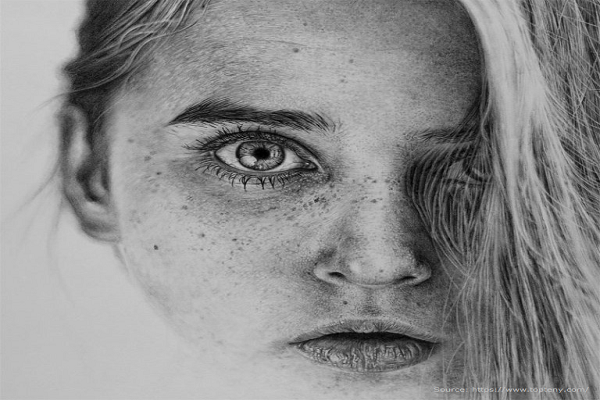
Every drawing set requires one of these 14 different types of pencils.
Which sketching and writing tools do you prefer, pencils or others? Here are all the various pencil types that you require for a full drawing set.
Ever questioned the origin of pencils? Or how did the actual discovery of graphite lead to the creation of the various varieties and types of pencils that are currently available?
If you must know, the Stylus was a type of ancient writing implement used by the Romans that had a significant influence on modern pencils. The Scribes used style, which is essentially thin metal rods, to write on papyrus, an ancient kind of paper, leaving a faint but legible imprint.
Following the discovery of a sizable graphite deposit in England's Borrowdale in the 1560s, graphite began to be widely used. Because it is far darker than lead, graphite first gained popularity for its extreme darkness. It turned out to be quite delicate and brittle, though, and needed a suitable holder in order to be contained.
Originally, graphite sticks were given in wood cases after being appropriately wrapped in strings, giving rise to the first pencil with a wood case. In essence, the graphite was placed within hollowed-out wooden sticks. As a result, it appeared as though similar-shaped wooden cases or coverings were being used to encase graphite sticks.
Types of Pencils Chart Used for Pencil Sketch Portraits
Pencils in B
Compared to "H" and "F," these pencils have darker lines, yet they can be quickly erased with no effort. They are great for doodling and drawing as well, while other individuals could use them for taking notes.
Because 'B' pencils are softer and so leave more graphite on the paper, this is what gives them their black color.
1.8B
On paper, this kind of pencil produces the deepest shade of grey because to its extraordinary darkness. Since it leaves very black, distinct traces that stand out on a page, it works best for drawing and sketching.
2.7B
This kind of pencil, which is nearly identical to 8B, is excellent for artistic reasons. Drawings look fantastic on paper since it emits a very dark grey hue that adheres to the paper.
3. 6B
This pencil is best suited for artists because it is designed specifically for adding dark values to your drawings. This is a fantastic choice if you want to create portraits with realistic skin, fur, or fabric textures.
4. 5B
This pencil is considerably softer than, say, a 2B pencil and leaves a darker imprint than those that came before it. This is due to the fact that a pencil will be softer and have a higher B number.
5. 4B
The 4B pencil is a great option for sketching and drawing because it is a little bit lighter than the ones that came before it. Using this pencil will be enjoyable for anyone who like art and drawing.
6. 3B
This pencil leans more toward a lighter grey and is more of a blend of dark and light shades. It is the perfect choice for individuals who prefer their works to have light values with subtle dark grey shading.
7. 2B
The 2B pencil offers a good range of tone or value from light to a dark shade and works best for medium to dark shading. It is frequently employed for artistic applications, particularly for sketching, shading, and drawing.
8. HB
The lead of this pencil is exactly in the middle of the range. A significantly hard pencil, even for drawing, HB is a reasonably hard pencil.
The letter "H" stands for the pencil's hardness, while the letter "B" stands for how dark the mark made by that particular pencil is.
Easy Techniques to Pencil Sketch Portraits
It makes sense why pencil sketching has been a well-liked art genre for so long. Pencil sketching is flexible, portable, and only needs a few simple art supplies. You can make a stunning work of art that is very intricate with just a few simple tools.
With a pencil, you can draw in a variety of styles, from simple lines to intricate drawings and sketches. Your pencil drawings can reach a whole new level by mastering a range of various sketching techniques, adding greater depth and finesse to the artwork you produce. Here, we offer some pencil drawing methods you can use for your upcoming design. Discover our best drawing advice and methods by reading on.
Choosing Your Sketching Tools
Your variety of techniques does not necessarily place a cap on the shades, textures, and shadows you can produce on the page. You may be severely limiting yourself if you don't know how to use your equipment. Harder graphite pencils typically produce a harder line and a more pointed finish, while softer graphite pencils typically allow for a darker, softer tone. Having a variety of pencil options in your drawing tool box is crucial for producing the best work.
Cross-Hatching and Hatching
These techniques are widely used and work well for adding depth to your sketches through shading. Hatching and cross-hatching are at the top of the list of abilities you should learn when it comes to well-known pencil drawing techniques that can elevate your designs. In order to generate shadow and depth in your drawing, you must simply draw a succession of lines parallel to the primary line. These lines must not cross. A succession of lines applied in the same way but at their intersections is known as cross-hatching. The shading in your drawing will be darker the closer these lines are together.
Stippling
Similar to hatching or crosshatching, stippling is the practise of adding dots to an image to enhance shading and depth. The impact increases with the proximity of the dots. Use softer graphite for this effect as it comes out darker to make sure your dots stand out and have more impact.
Scribbling
Everybody has written random doodles on a sheet of paper while on hold for a phone call. However, scribbling can be a very successful drawing approach. The irregular, uneven, and most definitely not straight lines in the painting can be used to identify a scribbled sketch. An image that has been slightly deconstructed by random movements across the paper may seem darker as additional erratic lines are drawn close together.
Circling
Simply alter the pressure you apply to your pencil to change the tone it creates. You can use short, circular strokes to give your transitions a more integrated effect. It's crucial to remember that you shouldn't draw tiny circles with obvious lines. Instead, apply pressure while rotating the pencil in a circle. A pencil with more wear and tear is better for this method.
Blending & Soft Shading
Smooth shading is a good option if you want to give your drawing a clearer shading effect. There are other ways to accomplish this, such as by blending cross-hatching or hatching with your finger or a piece of paper that has been folded up. Your sketch will look smoother as a result. Additionally, you may blend by simply angling your pencil to use the wider edge, resulting in larger lines that resemble shadows and shade.
Establishing Highlights
You can add highlights in the same way that you would add shading to give your sketch depth and shadows. Highlights can help you identify your light source, offer more detail, and highlight reflecting surfaces. Using an eraser to remove some of the colour or shading to make lighter regions to represent the lack of darkness are two excellent ways to achieve this effect.
Wrap Up:
It is always great to learn about new techniques and the specified material. All these information can help you create a masterpiece. In various Pencil Sketch Gallery, you can get yourswelf great pencil sketch portrait at reasonable prices. Dig in more with us for astonishing work by great Sketch Artists.





















